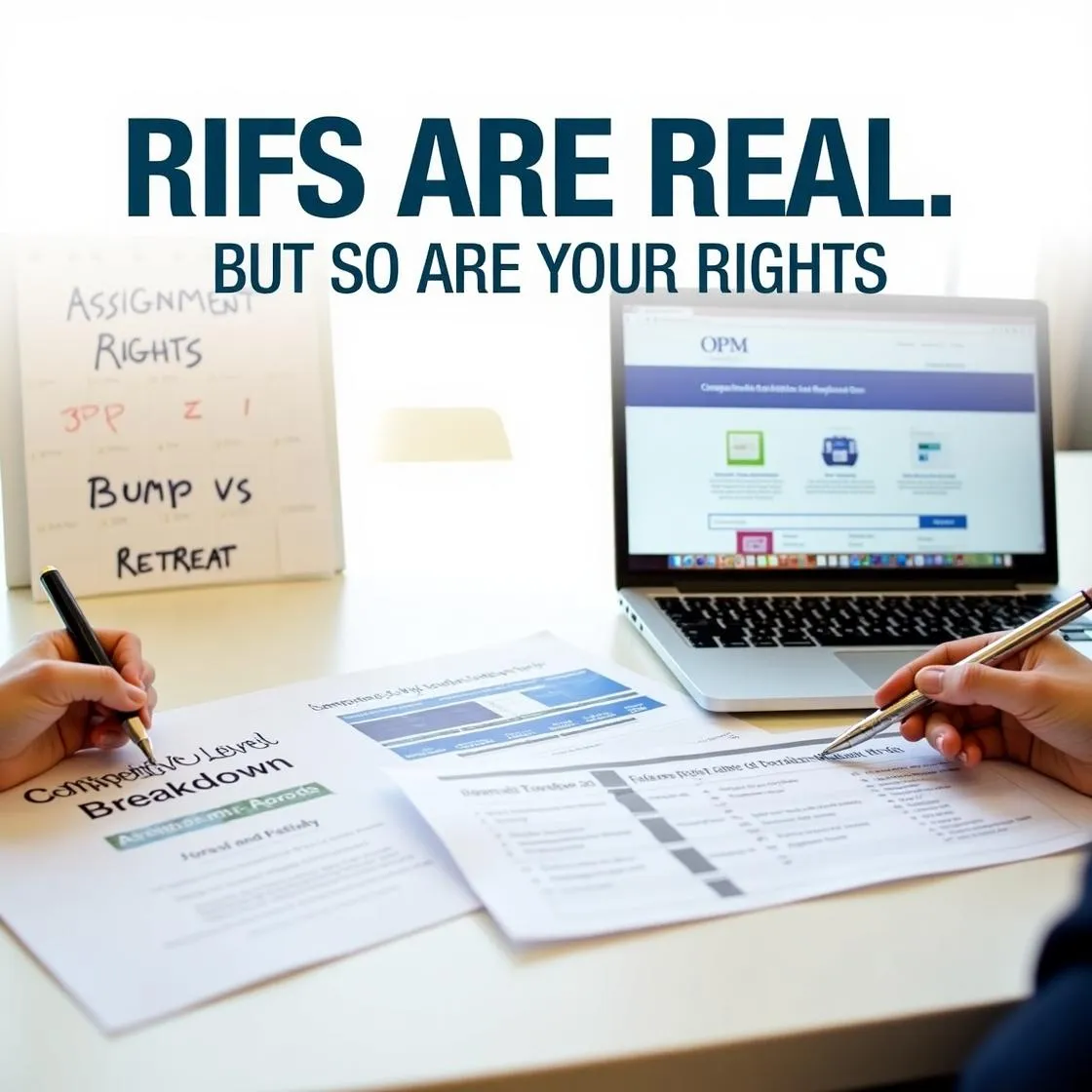| CALL US NOW!
Read Our Latest Blogs
Stay informed with the latest insights and expert advice on federal retirement planning. Our blog covers everything from optimizing your Thrift Savings Plan (TSP) to understanding the complexities of federal benefits, offering you practical tips and strategies for securing your financial future. Whether you're nearing retirement or just starting to plan, our blog is here to guide you every step of the way.

Feeling Anxious About a Federal RIF? Let's Break Down "Competitive Levels"
Feeling Anxious About a Federal RIF? Let's Break Down "Competitive Levels"

Hearing the words "Reduction in Force" or "RIF" in the federal workplace can definitely cause some stress. It's natural to worry about what it means for you and your job. Getting a handle on how the process works can help ease some of that uncertainty. One really important piece of the puzzle is something called a "competitive level." Let's unpack what that means and why it's so crucial during a RIF.
Think of it like this: federal rules (specifically 5 CFR Part 351, § 351.403, if you like the details) require agencies to group similar jobs together when planning for a RIF. This grouping is called a competitive level. It's the pool of positions that will be compared against each other during the RIF process.
What Makes Positions "Similar Enough" for a Competitive Level?
Agencies can't just randomly lump jobs together. There are specific rules they have to follow. For positions to be in the same competitive level, they generally need to:
Be at the Same Pay Grade (or level): Pretty straightforward – a GS-9 job isn't typically grouped with a GS-12 job.
Belong to the Same Job Category (Classification Series): For example, all accountant positions might be in one series, while all IT specialist positions are in another.
Have Similar Day-to-Day Work, Required Skills, Pay Systems, and Work Environments: This is a big one. The jobs need to be similar enough that someone doing one job in the group could realistically step into any other job in that same group and get up to speed without causing a major disruption.

What's a "major disruption" (or "undue interruption" in government-speak)? It basically means an interruption so significant that the person couldn't perform the essential work of the new position reasonably well within about 90 days.
A Few More Key Things About Setting Up These Levels:
It's About the Job, Not Just You: Usually, these decisions are based on the official job description, not necessarily your individual skills or background (though for some newer pay systems, like pay bands, other documents about your actual duties might be considered).
Different Service Types = Different Levels: There are separate levels for jobs in the "competitive service" versus the "excepted service." Even within the excepted service, jobs filled under different hiring rules get their own levels.
Pay and Hours Matter: Jobs under different pay systems (like GS vs. Wage Grade) are in separate levels. Same goes for different work schedules (full-time, part-time, seasonal, etc.). However, two part-time jobs that are otherwise identical won't be split just because one is 20 hours/week and the other is 30 hours/week.
Trainees Are Separate: If you're in a formal training or development program, your position will likely be in its own competitive level.
What Doesn't Create a Separate Level on Its Own?
Agencies can't create a separate competitive level just because of:
Slight differences in scheduled hours for part-timers.
A requirement to work rotating shifts.
The potential for future promotions built into the job.
Certain differences in locality pay or local wage rates (under specific circumstances).
Why Should You Care About Competitive Levels During a RIF?
Okay, so why does all this grouping matter? It's fundamental to how RIF decisions are made fairly:
Who's Compared to Whom (Retention Registers): When an agency needs to make cuts, they create a list, called a "retention register," specifically for each competitive level. This list ranks everyone in that group based on factors like how long you've worked for the government, veteran status, performance ratings, and job tenure.
The Order of Release: If layoffs happen within that group, they start from the bottom of the retention register list and work their way up. This system ensures that the legally defined retention factors are applied consistently among people doing similar work.
Your Options if Affected (Assignment Rights): Sometimes, if your position is targeted, you might have "assignment rights," often called "bumping" (moving to a job held by someone with lower retention standing) or "retreating" (moving back to a job you previously held). Your eligibility for these options depends partly on how your competitive level relates to others within your agency's defined geographic "competitive area."
Staying Informed: Your Right to Review
Agencies are required to make information about how they've defined competitive areas available. If you receive a RIF notice, you have the right to look at the retention register for your competitive level. You might also be able to see registers for other positions relevant to your potential assignment rights. This helps you understand how the agency made its decisions and where you stand.
The Bottom Line
Competitive levels might sound technical, but they're really about ensuring a fair and orderly process during a difficult time like a RIF. They make sure employees are competing for retention with others who hold genuinely similar jobs, based on objective factors. Knowing how these levels work is a key part of understanding the RIF process and your rights within it.
For more detailed information, check out the Federal RIF Resources website: https://federalrifresources.com/home
Hear What Our Clients Say
Edna

Thanks Gigi! It was a pleasure meeting with you. Thank you for all your help! Others in the office said we should speak with you.
John

Again thanks so much for your help in this matter, it made this so much easier for me.
Debbie

It is sad that one needs a consultant to figure out how to retire, but it is the reality and you filled a critical need for us. My retirement from the Postal Service would have been a disaster, possibly still pending, and a bigger source of anxiety for us without your help. Thank you again.

© 2024 Bodwin Financial Solutions, Inc - All Rights Reserved, Privacy Policy
info@justaskbfs.com
877-447-8004

